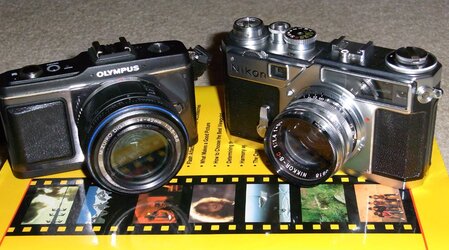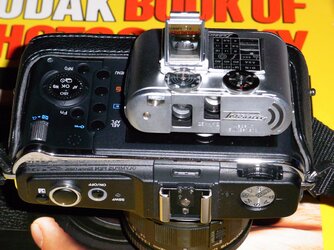BrianV
TPF Noob!
- Joined
- Nov 26, 2012
- Messages
- 806
- Reaction score
- 123
- Can others edit my Photos
- Photos NOT OK to edit
Go to a shop and handle it. Mirrorless cameras are compact, but not that much smaller than entry level DSLR's.
An EP2 is about as big as my Nikon full-frame mirrorless camera.
And it's huge compared with my 35mm twin-lens reflex camera. (HUMOR!)
An EP2 is about as big as my Nikon full-frame mirrorless camera.
And it's huge compared with my 35mm twin-lens reflex camera. (HUMOR!)















